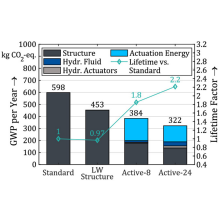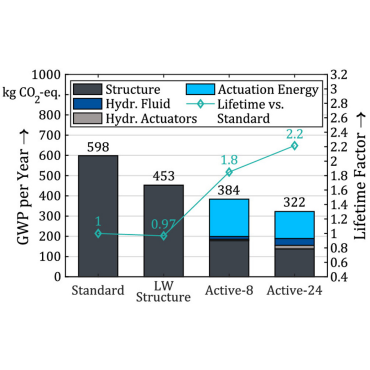The CRC 1244 Adaptive Skins and Structures for Tomorrow's Built Environment aims to show ways to build more in the future with less material, less waste and fewer emissions. At the same time, residents or users of buildings should feel better physically and psychologically in their built environment than before.
The key to implementing these goals is the integration of adaptive elements into supporting structures, the envelope system and interior design. Adaptivity is understood here as the purposeful variability and thus the adaptability of the geometry, the material and the component properties as well as the resulting overall appeal of a building.
Project D is dedicated to the environmental impact and economic cost analysis. Adjustments and levers in the product life cycle with respect to the used materials and the required energy can already be recognized during the development. This can lead to optimization measures. The investigation of the recyclability of the developed components, structural components and structures has a particular importance. The aim is to identify and assess at an early stage how sustainable production of these components can be realized.
Subproject Leader of Project D Economic and Environmental Aspects:
Prof. Dr.-Ing. Philip Leistner, Institute for Acoustics and Building Physics



